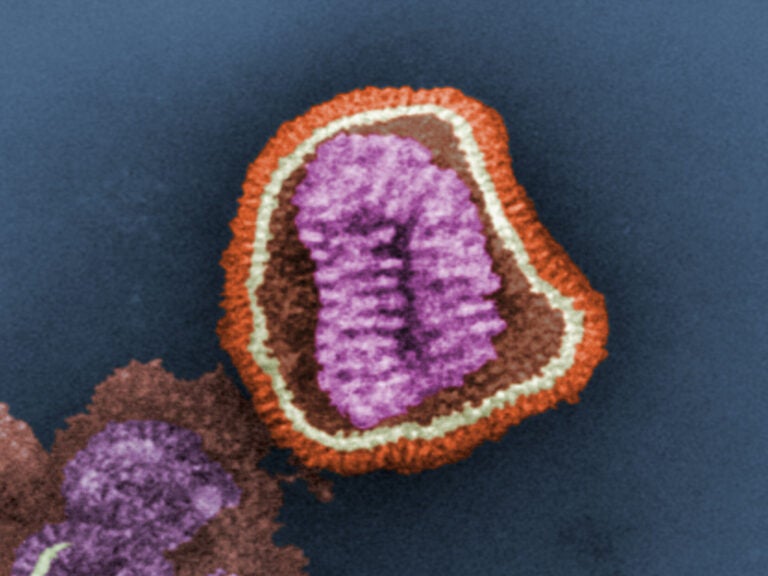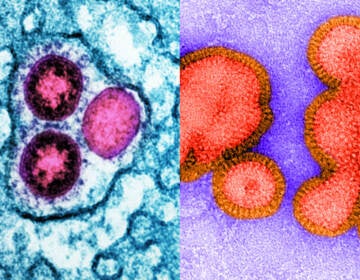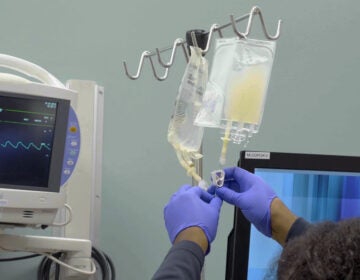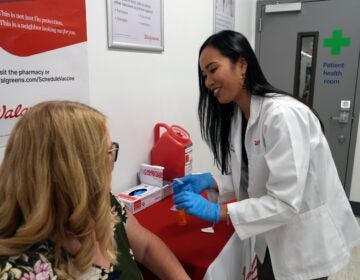Delaware hopes new flu test monitoring program gives better picture of virus spread
State health leaders are bracing for the possibility of “two epidemics going on at the same time” and are working on a plan to better track how the viruses spread.

The influenza virus. (Frederick Murphy/CDC)
Public health officials in Delaware will start collecting data from rapid flu tests this year, in anticipation of what could be a bad flu season across the country.
The U.S. often looks to Australia and the southern hemisphere to see what the flu season here could be like, and this year Australia had one of the worst flu seasons in recent years. It is hard for public health officials to get an accurate count of flu cases, because people will often stay home and treat the symptoms rather than go to a clinic or a hospital where they might get tested for the flu.
The last flu season was unusual. Typically, cases die down by around March. Last year, flu activity in the U.S. increased early in the year and stayed high until June, with two distinct waves.
Earlier this year, Westside Family Healthcare, which has five medical offices in Delaware, started doing rapid flu tests for patients who show up with flu symptoms, said Megan Werner, associate medical director of population health and quality. They did that so they can tell if a patient has the flu, COVID-19, or some other virus like respiratory syncytial virus. They swab a patient’s nose quickly on both sides for a few seconds, then run the sample in an analyzer that can test for flu and COVID-19 within 15 minutes. That way, medical staff can treat a patient with medicine that’s specific to flu or COVID-19 when appropriate.
Previously, health officials received flu data from patients who get lab tests for the flu because they end up in the hospital. Those lab tests take longer, but are more sensitive. This week, the Delaware Division of Public Health started a program to collect data from clinics, like Westside Family Healthcare, that do rapid flu tests on patients.
This would help officials keep track of less severe flu cases that would not have been recorded in the past, said Camille Moreno, an epidemiologist at the Delaware Division of Public Health.
“We’re hoping that this year we’ll have a better understanding (of) the burden of influenza in the community.”
Having more timely data is important because there are two– and potentially more – respiratory viruses circulating at the same time, said Thersa Sweet, an infectious disease epidemiologist at Drexel University who specializes in flu.
“We’re going to have essentially two epidemics going on at the same time— one with flu and one with COVID-19. And so it’s going to be important to be able to differentiate between the two.”
She added that because of masks and social distancing measures in the past two years, people have not been exposed to flu viruses as much, so their immunity will have waned. But now, most of those measures are no longer in place.
She said it would be good if more clinics collected real-time flu data to fill in the picture of what is happening overall. She’ll be watching what strains of flu show up in the U.S. cases. If the strains match the ones seen in Australia, that could be an issue because those same strains led to many cases of flu that strained their health systems. Both local and federal health officials recommend that everyone get their flu shots.
On Wednesday, Delaware health officials confirmed the state’s first cases of flu this season in a 32-year-old woman from Kent County. They say the woman had been vaccinated.
WHYY is your source for fact-based, in-depth journalism and information. As a nonprofit organization, we rely on financial support from readers like you. Please give today.






